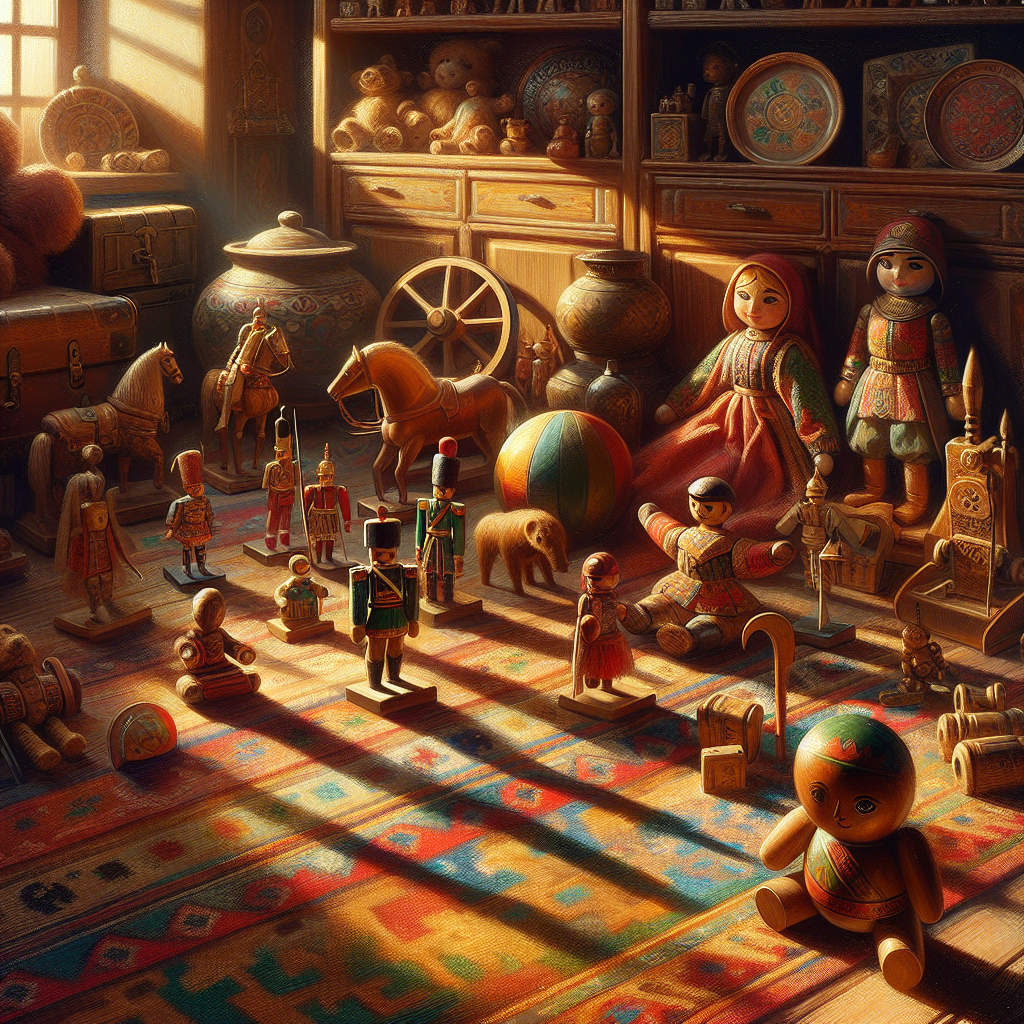The Cultural Impact of Toys on Society
From the earliest days of civilization, toys have been a pivotal part of human culture. These seemingly simple objects not only entertain but also serve as tools for learning and socialization. In this blog post, we will explore the profound cultural impact of toys on society, highlighting their role in shaping values, fostering creativity, and bridging generational gaps. 🌍
Table Of Contents
1. The Role of Toys in Cultural Transmission
2. Toys as Tools for Education
3. Gender Roles and Toys
4. The Digital Age and the Evolution of Toys
5. Conclusion
6. FAQs
The Role of Toys in Cultural Transmission
Throughout history, toys have been instrumental in passing down cultural values and traditions from one generation to the next. Wooden dolls, miniature soldiers, and handcrafted animals have all served as mirrors of the societies from which they originated. These toys often reflect the societal norms, beliefs, and customs prevalent at the time, acting as physical embodiments of cultural heritage.
For example, traditional Japanese toys such as the Kokeshi doll are not only cherished for their artistic beauty but also for their representation of Japanese culture and spiritual beliefs. Similarly, Native American toys often incorporate elements of storytelling and mythology, providing a rich tapestry of cultural education through play.

Toys as Tools for Education
Beyond cultural transmission, toys play a crucial role in education. Educational toys are designed to develop cognitive skills, enhance problem-solving abilities, and encourage curiosity. Building blocks like LEGO, for instance, not only spark creativity but also teach spatial awareness and engineering principles.
Moreover, toys such as puzzles and board games promote critical thinking and strategic planning. Interactive toys that incorporate language and math skills can significantly boost early childhood education, preparing children for academic success while making learning an enjoyable experience. 🧠

Gender Roles and Toys
The discussion around gender roles and toys has gained significant attention in recent years. Traditionally, toys have been categorized based on gender, with dolls and kitchen sets marketed towards girls, and action figures and construction sets aimed at boys. This division has long contributed to reinforcing gender stereotypes.
However, the landscape is gradually shifting as society becomes more aware of the importance of gender-neutral toys. Manufacturers are now creating toys that encourage children to explore beyond traditional gender roles, promoting inclusivity and acceptance from a young age. This change is not only crucial for individual development but also for fostering a more equitable society. 🌈
The Digital Age and the Evolution of Toys
The digital revolution has dramatically altered the landscape of toys, introducing a new dimension of interactive play. Electronic toys, virtual reality games, and online platforms provide immersive experiences that were unimaginable just a few decades ago. While these advancements offer exciting opportunities for learning and engagement, they also pose challenges related to screen time and physical activity.
Parents and educators must strike a balance, ensuring that digital play complements traditional toys rather than replacing them. Combining digital and physical play can create a harmonious environment where children benefit from the best of both worlds. 🕹️
Conclusion
The cultural impact of toys on society is profound and multifaceted. These playful objects are not merely sources of entertainment; they are powerful tools for cultural transmission, education, and social change. As we move forward, the evolution of toys will continue to reflect and influence the values and priorities of our society, shaping the minds and hearts of future generations.
FAQs
Q: How do toys influence a child’s development?
A: Toys aid in cognitive, social, and emotional development by encouraging creativity, problem-solving, and interaction with others.
Q: Are digital toys harmful to children?
A: Digital toys can be beneficial if used in moderation and in conjunction with traditional play. It’s essential to balance screen time with physical activity.
Q: What are some examples of gender-neutral toys?
A: Gender-neutral toys include building blocks, puzzles, art supplies, and scientific kits, all designed to appeal to children regardless of gender.
Q: How have cultural toys evolved over time?
A: Cultural toys have evolved from handcrafted items reflecting local traditions to globally inspired toys that incorporate diverse cultural elements.
By understanding the cultural impact of toys, we can appreciate their role in shaping not just childhood memories, but also the fabric of society itself. 🎨
